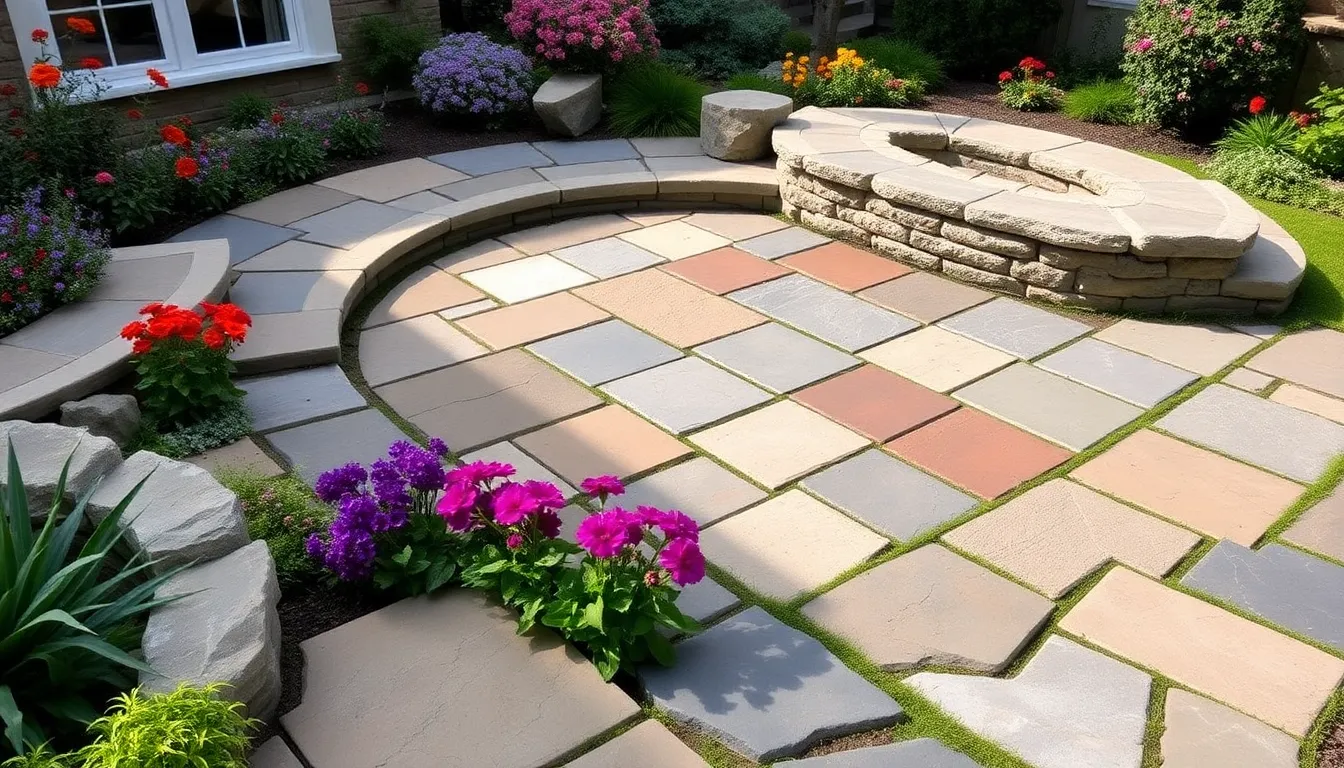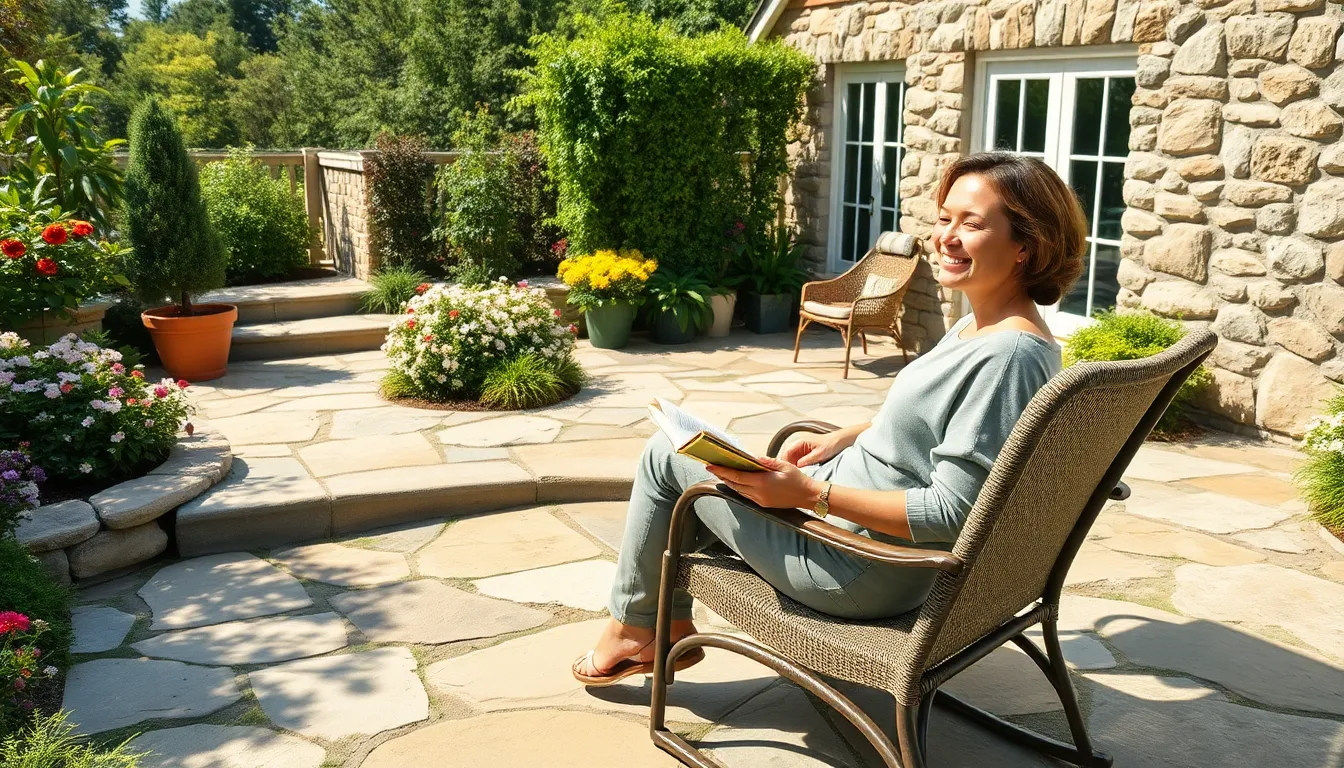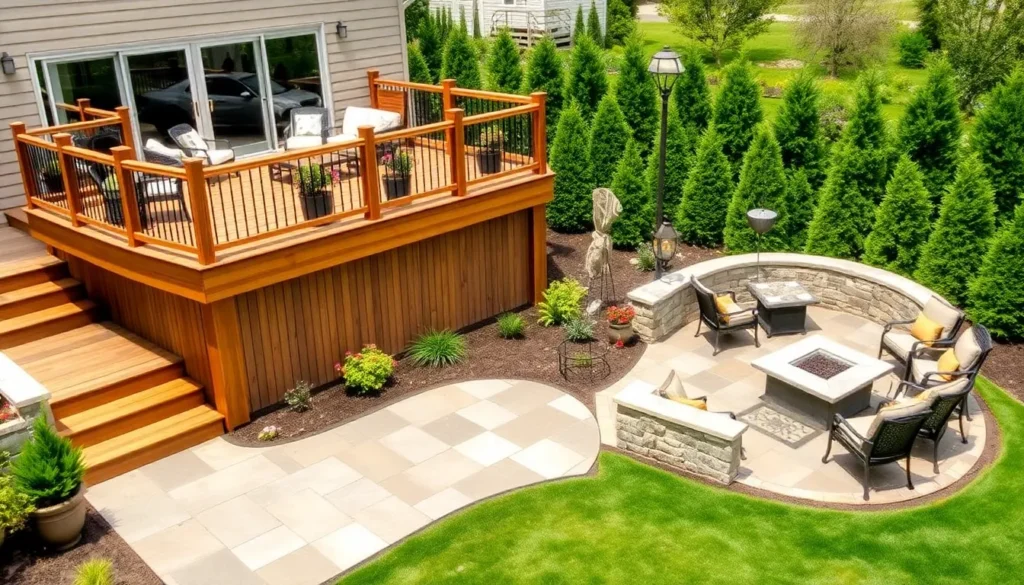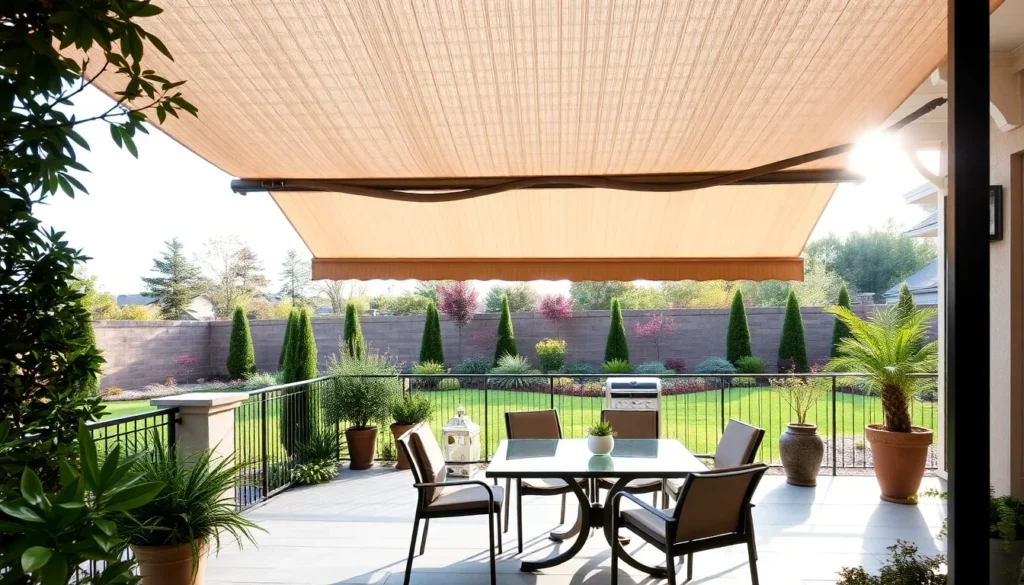Picture this: a sunny afternoon, the grill sizzling, and friends lounging on a beautiful flagstone patio. Sounds like paradise, right? Flagstone patios not only elevate outdoor spaces but also add a touch of elegance that makes neighbors green with envy. With their natural textures and earthy colors, these patios become the perfect backdrop for gatherings, barbecues, or simply enjoying a quiet moment with a good book.
Table of Contents
ToggleOverview of Flagstone Patios
Flagstone patios offer a beautiful and durable outdoor space for relaxation and gatherings. These patios consist of flat pieces of stone that create a natural look, enhancing any landscape.
What Is a Flagstone Patio?
A flagstone patio features irregularly shaped stones, typically made from slate, limestone, or sandstone. These stones lay directly on the ground or on a base of gravel or sand. Many homeowners choose this versatile option due to its aesthetic appeal and ease of installation. Unique colors and textures create a customized appearance that fits various design preferences.
Benefits of Flagstone Patios
Numerous advantages come with selecting flagstone for patios. Durability stands out as a primary benefit; flagstone withstands weather elements without significant wear. Low maintenance requirements make these patios attractive, as occasional cleaning suffices to keep them in good condition. Additionally, flagstone’s natural texture provides slip resistance, enhancing safety. Versatility allows flagstone patios to complement both formal and casual landscapes, making them suitable for different outdoor activities.
Types of Flagstone

Flagstone comes in various types, each with distinct characteristics. Homeowners often choose based on aesthetic preference and performance.
Common Types of Flagstone
- Slate – It features varying colors, including gray, blue, and green. Slate’s smooth surface enhances modern patio designs.
- Limestone – Known for its warm tones, limestone provides natural durability. It complements traditional and rustic styles beautifully.
- Sandstone – This type offers rich hues and a textured surface. Sandstone enhances outdoor spaces with a classic look.
- Quartzite – Renowned for its strength and resistance to weathering, quartzite is ideal for high-traffic patios. Its natural sheen adds elegance.
Choosing the Right Flagstone for Your Patio
Selecting flagstone involves considering several factors. Color options should align with your overall landscape design. Texture impacts safety; smoother stones work well for walking areas while rough textures prevent slipping. Budget considerations play a vital role, as prices vary widely by type and quality. Climate requirements also influence your choice; certain stones endure extreme weather better than others. Personal preferences help find the perfect stone that matches desired aesthetics and functionality.
Installation Process
Flagstone patio installation involves careful preparation and execution to achieve optimal results. The process includes several key steps: preparing the area, laying the flagstone, and applying finishing touches.
Preparing the Area
Preparation starts with choosing the location for the patio. Measurements ensure the space accommodates desired dimensions. After marking the area, the soil should be excavated to a depth of 4 to 6 inches. Base material, such as gravel or sand, should then be added for drainage and support. Compaction of the base ensures stability. Proper leveling guarantees surfaces are even, while edging materials define the perimeter of the patio.
Laying the Flagstone
Flagstone comes in various shapes and sizes. Lay the stones in the desired pattern while maintaining consistent gaps between them. Adapting to the natural outline of the stones creates an organic look. Adjusting each slab allows flexibility for fitting irregular edges. Use a rubber mallet to secure flagstones into the base without damaging them. Secure loose stones with sand or gravel to fill the gaps for stability.
Finishing Touches
Finishing touches enhance the overall appearance and functionality. First, sweep sand into the joints between the stones to lock them in place. Watering the area helps settle the sand and creates a sturdy base. Consider applying a sealant to protect the stones from moisture and stains. Edging materials not only add visual appeal but also prevent stone movement. Regular maintenance will keep the patio looking its best over time.
Maintenance Tips
Regular maintenance keeps a flagstone patio looking its best. Implementing simple tasks can prolong its beauty and durability.
Cleaning Your Flagstone Patio
Cleaning involves sweeping away debris and dirt. A pressure washer can effectively remove stubborn stains and moss. Use a gentle solution of soap and water for oily marks. For tough stains, consider applying a specialized stone cleaner designed for flagstone. Protect surrounding plants by rinsing any cleaning solutions promptly. Regular upkeep stops dirt buildup, maintaining the patio’s aesthetic.
Sealing and Repairing Flagstone
Sealing enhances the longevity of flagstone, preventing moisture penetration and stains. It’s advisable to apply a sealant every 1-3 years, depending on foot traffic and weather exposure. Routine inspection for cracks ensures timely repairs. Fill any gaps with a sand mix or appropriate filler to prevent further damage. A well-maintained seal provides an attractive finish and helps resist future staining.
Cost Considerations
Building a flagstone patio involves various costs that homeowners must consider. These costs can fluctuate based on several factors.
Factors Influencing Cost
Location impacts the overall price significantly. Materials usually represent the largest expense, where types of flagstone like slate or limestone differ in cost. Labor costs often vary between areas and can also affect total expenditure. Size of the patio plays a crucial role; larger patios require more materials and labor. Site preparation needs, such as excavation and base material installation, might incur additional expenses. Lastly, complexity of the design, including patterns and cuts, can lead to higher costs.
Budgeting for Your Flagstone Patio
Establishing a budget is essential for any patio project. Homeowners should first calculate material costs based on desired flagstone type and area size. Adding a buffer of 10-15% for unexpected expenses tends to be wise. Labor costs can often be a significant part of the budget, so it’s crucial to compare quotes from various contractors. Maintenance expenses also fit into the budget; regular sealing and cleaning are necessary for longevity. Considering these elements helps ensure a successful flagstone patio project while keeping finances in check.
A flagstone patio offers a beautiful and functional addition to any outdoor space. Its natural beauty and durability make it an appealing choice for homeowners looking to enhance their landscapes. With the right selection of materials and proper installation techniques, a flagstone patio can provide a stunning backdrop for gatherings or quiet moments of relaxation.
Regular maintenance ensures that the patio remains attractive and safe for years to come. By considering factors such as design, budget, and climate, homeowners can create a personalized outdoor oasis that not only meets their needs but also adds value to their property. Embracing the charm of flagstone can transform any backyard into a welcoming retreat.










